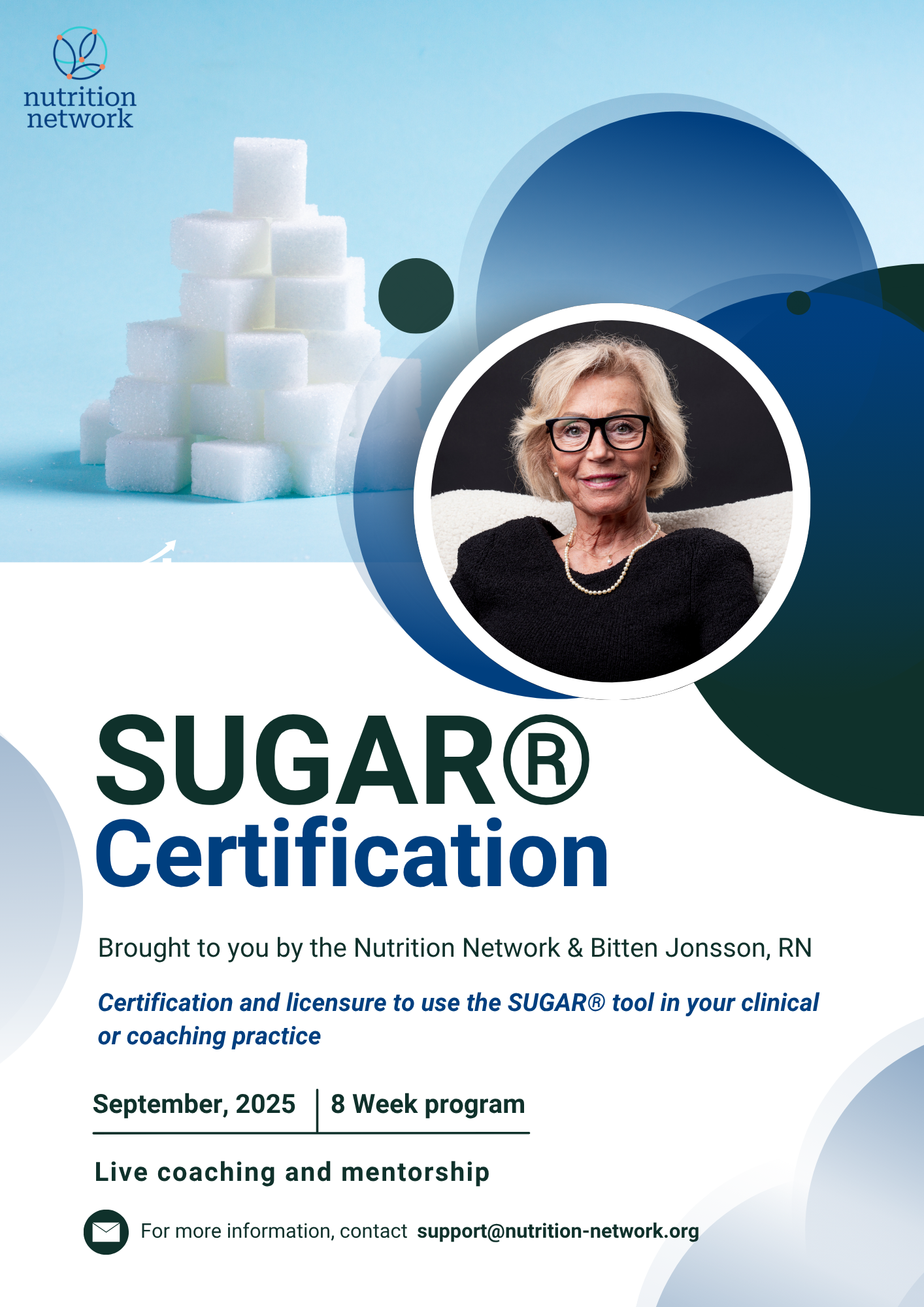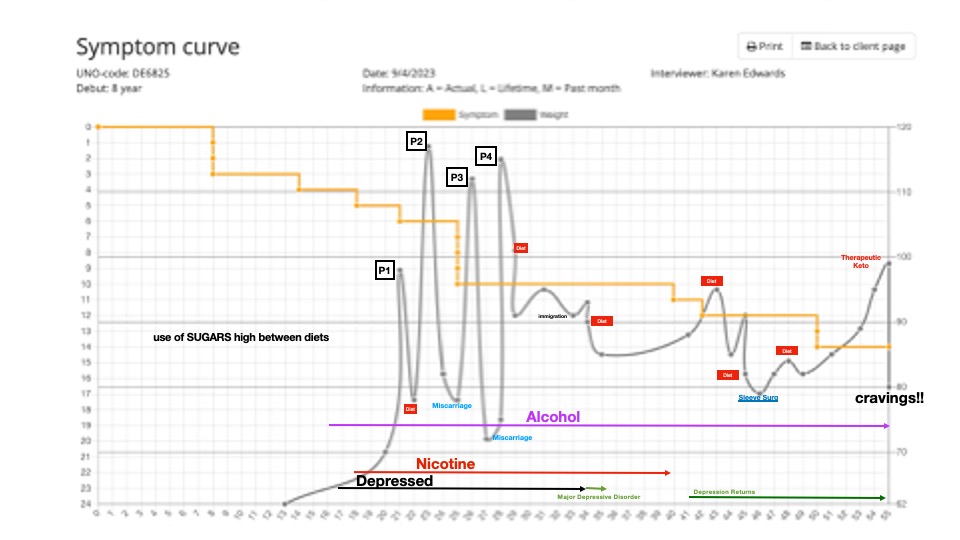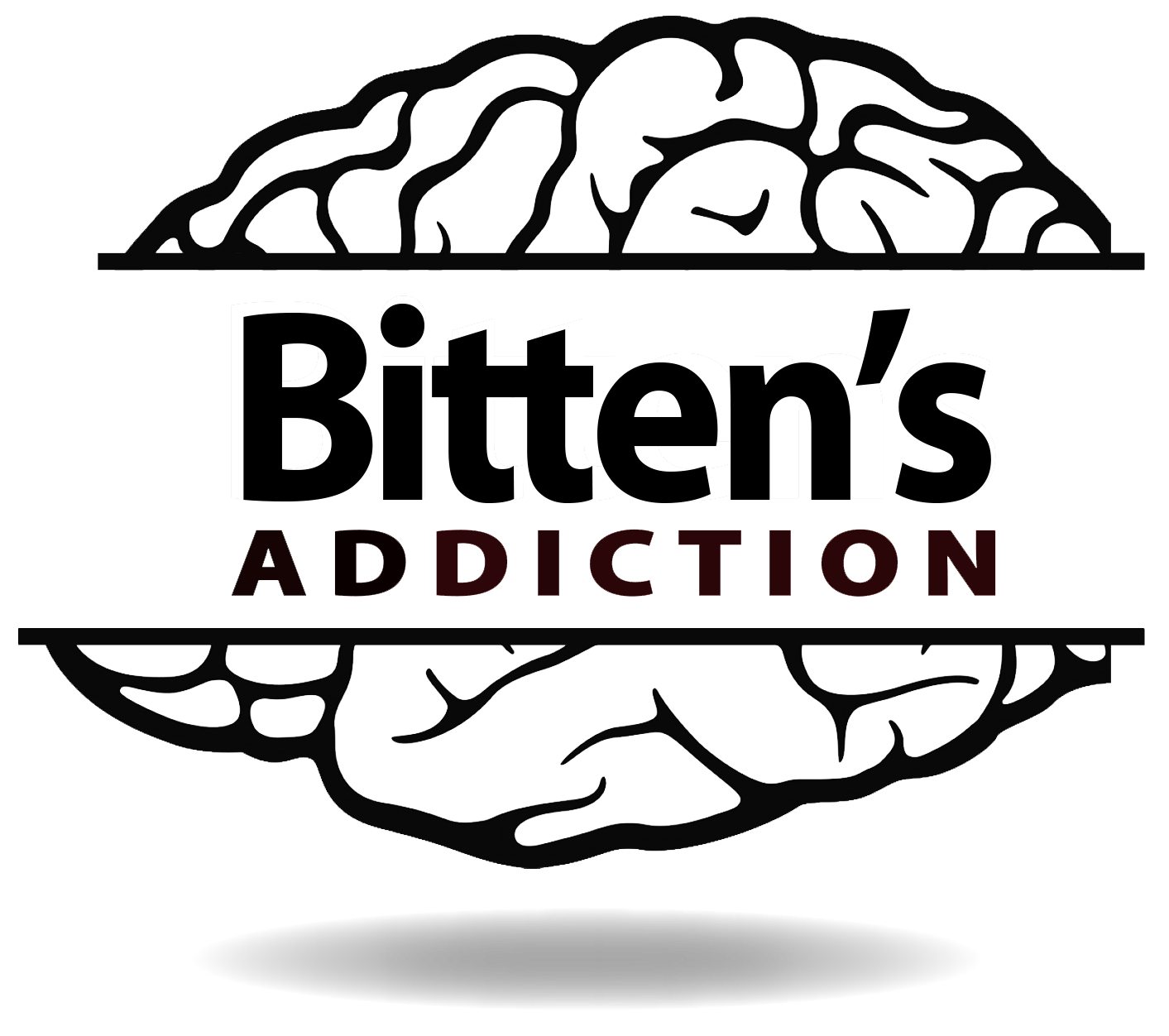
For more information and to register for SUGAR® training and certification with Bitten, contact support@nutrition-network.org.
A few words from one of my trainees
”SUGAR® is a comprehensive diagnostic assessment tool for sugar addiction. This program has helped me to properly diagnose sugar addiction and make the difference from social use, harmful use, and sugar addiction, which has therapeutic implications. A sugar addict has to achieve abstinence to have the best chances for long-term rehabilitation and remission. SUGAR is an invaluable clinical tool for improving patient diagnostics and outcomes.” Dr. Carlos Zumarraga Novelo, Medical Director at Clinica Keto.
SUGAR® Certification training (with licensure)
Since its introduction in 2013, Bitten Jonsson has been the sole provider of certification training that teaches healthcare professionals of all types how to effectively use the powerful, diagnostic tool known as SUGAR®. Today, there are scores of SUGAR® certified and licensed professionals across the globe. However, countless more are needed to battle the growing onslaught of sugar and carb addiction in today’s ultra-processed food environment. You can join us and become one of those much-needed professionals!
NEWS! Starting in the fall of 2025, I am very excited to do the training in a new format in collaboration with Nutrition Network, world leaders in changing medical professionals in the new paradigm. Treating illness with the science of Therapeutic Carbohydrate Restriction – sugar/carb addiction is one of those illnesses.
The acronym SUGAR® stands for Sugar Use General Assessment Recording.
SUGAR® is the first and only diagnostic instrument specifically dedicated to assessing addiction/pathological use of sugar and carbohydrates.
With nearly four decades of specialized experience in sugar/carb addiction treatment, Bitten Jonsson trains professionals on the nature of this complex disease. This certification course includes all of the topics necessary for professionals to capably assess sugar/carb addiction with the SUGAR® diagnostic instrument and make informed treatment recommendations.
This simple tool transforms people’s lives
The SUGAR® evaluation tool for sugar and carb addiction has proven to be extremely effective in breaking through shame, denial, and stigma and motivating clients. It serves as a basis for treatment planning and is based on ICD-10/ICD-11 and DSM-5 addiction criteria.

What is SUGAR®?
- SUGAR® is a comprehensive, diagnostic assessment tool (administered as a structured interview) that examines a client’s relationship with sugar, flour, carbohydrates, processed and ultra-processed food, and its related consequences.
- Prior to the development of SUGAR®, there was no comprehensive diagnostic evaluation instrument available for sugar/food addiction, although a number of screening tools do exist such as UNCOPE/S, Yale scale, different self-assessment questionnaires, etc.
- SUGAR® is based on the diagnostic criteria for harmful use, pathological use, and addiction to mind-altering (psychoactive) drugs as described in the ICD-10 (International Classification of Diseases) from WHO, and DSM-5 from APA and is currently being upgraded to ICD-11.
- SUGAR® is a tool that accurately distinguishes between pathological (addictive) use and harmful use (such as stress-eating or emotional eating by a person who is experiencing damaging consequences but isn’t chemically addicted). This distinction is vital in identifying appropriate treatment. Those two very different conditions have very different treatment protocols. Addiction to sugar, flour, and/or processed food is a chronic, complex, and serious disease requiring a treatment model of abstinence. Harmful use, on the other hand, can sometimes be remedied with a treatment model of moderation.
- Embedded in the tool is screening for Addiction Interaction Disorder (AID). This important screening addresses the need to understand addiction as one illness with many outlets, such as alcohol, subscription pills, and recreational drugs.
- Each SUGAR® assessment includes an addiction development curve that shows the client’s relationship with sugar/flour/food from the beginning of the harmful use to the present. This is the best motivational tool available for addicted people today. It has proven to be quite successful in increasing client motivation and compliance with recovery treatment protocols. Moreover, professionals report that using this approach helps prevent burnout and treatment fatigue. There’s no arguing with clients about the nature of the illness.
Who is SUGAR® training for?
SUGAR® training is for professionals who work with people who may have developed a problematic relationship (or even a chemical addiction upon) sugar, flour, and/or processed food. The purpose of the training is to learn how to use the SUGAR® diagnostic instrument which is based on internationally approved criteria for addiction according to diagnostic criteria of the DSM-5, and ICD-11 for harmful use and addiction.
After the training, you will be able to:
- Analyze and compile the information collected from SUGAR® assessments in an organized and easily understood way, based on the diagnostic criteria and your knowledge about addiction medicine.
- Present your assessment to the client, or to the referral organization, in a therapeutic, caring, and non-confrontational manner that provides a safe space for clients to begin their recovery.
- Assist clients in gaining deep insight and knowledge into their problems.
- Assist clients in breaking through denial and gaining insight into how to receive help.
- Direct clients to appropriate treatment sources.
Only practitioners/professionals certified and licensed in SUGAR® are authorized to use this diagnostic assessment tool. Authorization for this tool requires completion of the SUGAR® certification/licensure course and continuing licensure afterwards.
Here’s an example of the powerful sugar curve.

Here’s what SUGAR® co-developer Börje Dahl has to say about it:
”In using SUGAR® we ask our patients to give us permission to be invited into their lives, to share their experiences, and to learn about how a psychoactive substance has captured their being. This process creates an alliance between us, increasing the interviewee’s willingness to change and decreasing the level of shame that loss of control has caused them. In short, SUGAR® is a stepping stone to a new life.”
— Börje Dahl, CEO, Dahl and Dahl
Final assignments after the training from two of the professionals in the team in 2025
Final summary
Background
”
Having personally undergone a SUGAR assessment, primary treatment, and HAM, I approached my trial client work with both humility and curiosity. I know firsthand how powerful it is to have an addiction mapped, validated, and placed in context. I have written previously that addiction is an illness with many expressions, and sugar/carbs are among the hardest to detect because they are so normalized. Meeting with my two trial clients made it even clearer how shame, denial, and uncertainty about what is truly unhealthy permeate this type of addiction.
Process
With both clients, I conducted a full SUGAR interview, produced a written report, and delivered feedback. Trial client one was open, reflective, and articulate throughout. The chart confirmed his or hers own experience of how the addiction had crept in and escalated over time. He or she was struck by the connections between weight changes, symptoms, and low mood, which deepened their motivation to address the addiction seriously. Trial client two however, struggled to recall details such as ages and timelines, responding uncertainly and at times with irritation. In hindsight, I recognize this as a sign of cognitive fog, shame, and denial — a reminder that addiction physically impairs the brain, particularly the prefrontal cortex. This reinforced for me that SUGAR is not only a diagnostic tool but also an educational and therapeutic one.
Reflection
Addiction is not about morality or willpower, but an illness that alters brain structure and function. This became especially clear during feedback sessions, where clients found it challenging to distinguish between bad habits and addictive symptoms. With client one, we discussed the idea of “the hand that lives its own life” — the automatic, compulsive nature of certain eating behaviors. They also described cognitive improvements during abstinence, something I have personally experienced in recovery. The SUGAR process makes denial difficult. Seeing, in black and white, how symptoms develop over time and how their use affects health and life circumstances opens the door to acknowledgment. Both clients said they “recognized themselves” in the charts, and that recognition itself was motivating. There is great power in feeling understood, not judged.
Conclusion
In my first assignment, I wrote that “knowledge of one’s own history is essential for planning and changing one’s future.” This belief has only deepened. Through SUGAR, my clients and I could see addiction not as a string of poor choices, but as a disease process — a perspective that changes the foundation for recovery. I am reminded of the importance of delivering feedback with warmth, clarity, and structure. That is where transformation begins — in the meeting, in the mirroring, in the shared exploration of the past and the possibilities ahead. Working with SUGAR has strengthened my role as a therapist and deepened my understanding of addiction from both a clinical and human standpoint. It is one of the most powerful tools I have used, and I am grateful to help more people access their own story — in the light, with new possibilities.” /Björn Engström, social worker.
Summary of the training
”
After more than 20 years as a child psychologist – where screening, assessment, interpretation, summarizing, and providing feedback were central parts of my work — I realized that these tasks were not the hardest part. The context is, of course, different: here it’s not about intelligence testing or cognitive impairments, and I’m working with adults rather than children. Still, the overall structure felt familiar.
What I found most challenging was avoiding overwhelming the client with too much, or too detailed, information — knowing that in that moment, they simply couldn’t absorb it all. That’s why having a diagnostic tool to rely on feels so valuable. Not only does it offer me a solid foundation for my clinical work, but it also provides clients with clear and visual feedback. This, in turn, reduces the risk of slipping into arguments with the “red dog” — the illness itself (with the danger that my own “dog” might also start stirring).
The tool helps make the process more neutral in tone. Of course, it can still be emotionally difficult, but I find that the ever-present shame doesn’t take over. Instead, clients are more often able to stay in the session with a sense of recognition and acknowledgment — “this is how things are.” For me as a therapist, the tool has become a reliable support, especially when assessing which clients my colleague and I will take on in our practice going forward. Our focus is on working with individuals struggling with addiction to sugar and carbohydrates.” /Angelica Jyttner, child psychologist
References HMA® & SUGAR® C/L
Judy Wolfe, judywolfefacoach@gmail.com, Worcester, USA
Shun Foreman, shunforeman@gmail.com, Texas, USA
Julie Clark, julie@julieclark.net, Virginia, USA
Tia Reid, reidtiam@gmail.com, Illinois, USA
Sandra Palavecino, sandrapalavecino@yahoo.com
Wendy Moore, wendy@keto-retreat.ca
Pamela Demarest, pamela76phoenix@yahoo.com
Carlos Zumaragga, carloszumarraga992@gmail.com
Björn Engström, livsstilsrehab@hotmail.com
Angelica Jyttner, angelicajyttner@hotmail.com
When to begin
Next training starts on September 23rd, 2025. You can apply and/or email your interest to support@nutrition-network.org. If you have additional questions, please click here to contact Bitten Jonsson.
 Svenska
Svenska

